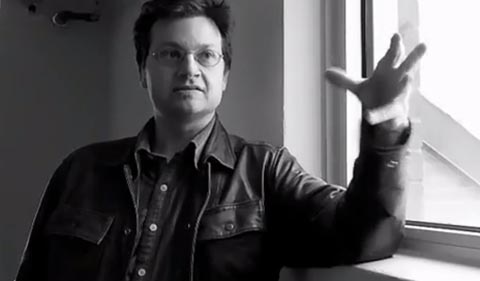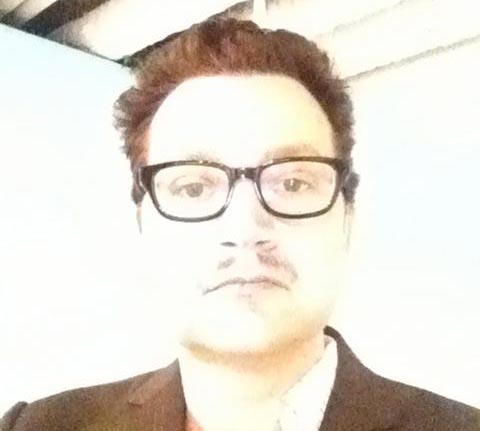

A Chat With Ottawa Festival Artistic Director Chris Robinson

First staged in 1976, the Ottawa International Animation Festival is no spring chicken. Only the animation festivals in Annecy (France) and Zagreb (Croatia) can claim to be older. Despite its age though, Ottawa is more eclectic and surprising than at any point in its history.
For the past decade-and-a-half, under the artistic direction of Chris Robinson, the Ottawa Animation Festival has burnished its reputation for challenging and unconventional fare. It has also managed to piss off its fair share of filmmakers, including Sylvain Chomet and Aleksandr Petrov — controversies that Robinson has addressed in his writing.
The North American animation festival scene has become much more crowded in recent years, but at the end of the day, Ottawa remains the gold standard with its trifecta of provocative competition selections, intelligent film/lecture programming, and diverse attendees from the global animation community. Regardless of whether I’m invited as a guest (such as this year) or pay my own way, it’s one of my favorite festivals. It continues to grow too — while the festival has always been a hub for the East Coast animation community, it has recently made a concerted effort to invite more guests from the West Coast animation scene. Below, Chris Robinson talks with Cartoon Brew about the continuing evolution of the Ottawa festival and what we can expect at this year’s edition, which begins next Wednesday, September 19.
Cartoon Brew: How much has the Ottawa animation festival changed since you became its artistic director in the mid-90s?
Chris Robinson: Identity. Stability. Fluidity. Community. Foundation.
The biggest change is the OIAF has a pretty solid foundation in place and it has become very communal and team orientated.
Some of the seeding began when I came aboard in 1995. Having no animation background (outside of working for the OIAF since 1992), I couldn’t help but bring a different perspective to both the programming and identity of the OIAF. It was not always pretty or smooth, but it was a starting point. The real turning point was in 2000 when Kelly Neall came aboard as Managing Director. We have very different personalities, almost opposites in some ways, and that yin-yang combination was perfect for the OIAF.
Kelly played a central role in giving the OIAF some sense of stability. Through Kelly, we’ve expanded and managed to put together a solid team of people. When I took over in 1995, I was the only regular employee really until about 2000 when Kelly came aboard. Today, we have about 5 full time, 1 part time along with a steady stream of contract staff through a government program. More importantly, people past and present like Maral Mohammadian, Andre Coutu, Jerrett Zaroski, Azarin Sohrabkhani and Dominique Forget play(ed) essential parts in helping shape and re-shape the OIAF structure, identity, programming, and vision.
Cartoon Brew: When I first started attending a decade ago, I don’t recall there being so many commercial/mainstream guests. This year’s line-up includes Hotel Transylvania director Genndy Tartakovsky, ParaNorman co-director Chris Butler, and Fairly OddParents creator Butch Hartman. Is this a good thing?
Chris Robinson: Why wouldn’t it be?
Cartoon Brew: Because Ottawa has always been about promoting unheralded independent filmmakers and industry iconoclasts. I wonder whether this commercial presence shifts the focus away from the creative filmmaking that is the reason many of us attend in the first place. How do you balance it and keep the festival from becoming too commercial?
Chris Robinson: I think the indie/commercial issue is a bit overstated. There’s more mainstream in some areas for those people who want that, but there’s the same amount of indie/experimental events for folks who don’t care about industry/commercial. It’s all perspective. You’ve pulled out a few events that fall into the commercial realm (no more than any other year), but what about the special screenings: Barry Purves, Karen Aqua, Run Wrake, Ralph Bakshi, 3 other thematic programmes (Intersections, Stand-Up Comedians, YouTube) about as removed from commercial as you can get.
Oh… and there are the competition screenings. Would anyone consider Chris Sullivan, Leah Shore, Hisko Hulsing, Theo Ushev, Michaela Pavlatova, Purves, Paul Bush, Michael Langan, Pierre Hebert, Don Hertzfeldt, PES, Steve Subotnick etc… to be icons of the commercial/mainstream? Kinda doubt it. On our post-festival surveys, we’ll get 10% who say programming is fine, 40% who say we’re too arty, 40% who say we’re too commercial. I’d say we’re doing just fine.
Cartoon Brew: You curated a Ralph Bakshi retrospective this year. His work often feels very much of a time and place. Why is he relevant today?
Chris Robinson: I’m not smitten with all of his work, but what I respect is Ralph’s punk spirit. He does what he wants, the way he wants. He had some quote saying, “Animation is whatever the fuck you want it to be.” That should be a mantra for every animator.
In Bakshi’s films — especially Fritz, Coonskin, Heavy Traffic — he gives us a world that is raw, genuine, intense, shortsighted, naive, sloppy, arrogant, ugly, poetic, pretentious, uncomfortable, disjointed, violent and urgent. Just the way life is. Just the way we are. His films deal with issues (sex, race, class, identity) in ways that make people uncomfortable – even today – and that’s a great thing because it can force you to ask yourself some tough questions about your own existence and society.
When I started working on the retrospective part of my goal was to show what animation was missing today… that we don’t have a shitdisturber like Bakshi…. who did all this wonderful craziness in a commercial setting. I still believe that…but an interesting thing happened during the process. I started noticing that we have a chunk of films this years that carry the Bakshi torch in different ways: Chris Sullivan’s Consuming Spirits, Ian Miller’s Cheap Joke, Leah Shore’s amazing film, Old Man (about Charles Manson), Hisko Hulsing’s Junkyard. He’s had an enormous influence on many independent animators and I know a lot of animators attending Ottawa this year are very excited to have a chance to meet him.
Personally, I’ve found that a lot of Bakshi’s words and ideas are not all that far from what we try to do at the OIAF. The idea of challenging people’s perceptions and thinking about animation is very close to the spirit of the OIAF.
Cartoon Brew: Tell us about the programs you’re excited about at this year’s festival?
Chris Robinson: That never changes. The competition screenings are always the one I’m most excited about. We make these decisions in relative isolation and in less than ideal situations (ie. choosing 100 films or so out of almost 2400 entries)… so it’s always interesting to see how an audience reacts… and even how you react as a programmer to the film in a cinema context.
There are really a lot of great screenings this year that will appeal to everyone. Barry Purves, Run Wrake, Karen Aqua along with some unique special screenings featuring stand-up comedians, YouTube creations etc… but, yeah, I’m pretty excited about the Bakshi screenings especially the One on One event we’re having with Ralph. Could be some fireworks!
Hell, I’m excited to see what Frenzer and Foreman are going to do this year at the closing ceremonies. Hard to top an improvised Mandarin rap performance.
Cartoon Brew: For an artist reading this, either pro or student, how would you answer the question, Why attend an animation festival, especially when I can see so much animation online nowadays?
Chris Robinson: That’s like saying why have sex when I can jerk off anytime I want to.
EDITOR’S NOTE (9/15/2012): At the request of Chris Robinson, there were a few minor revisions to his answer to the Ralph Bakshi question.

.png)